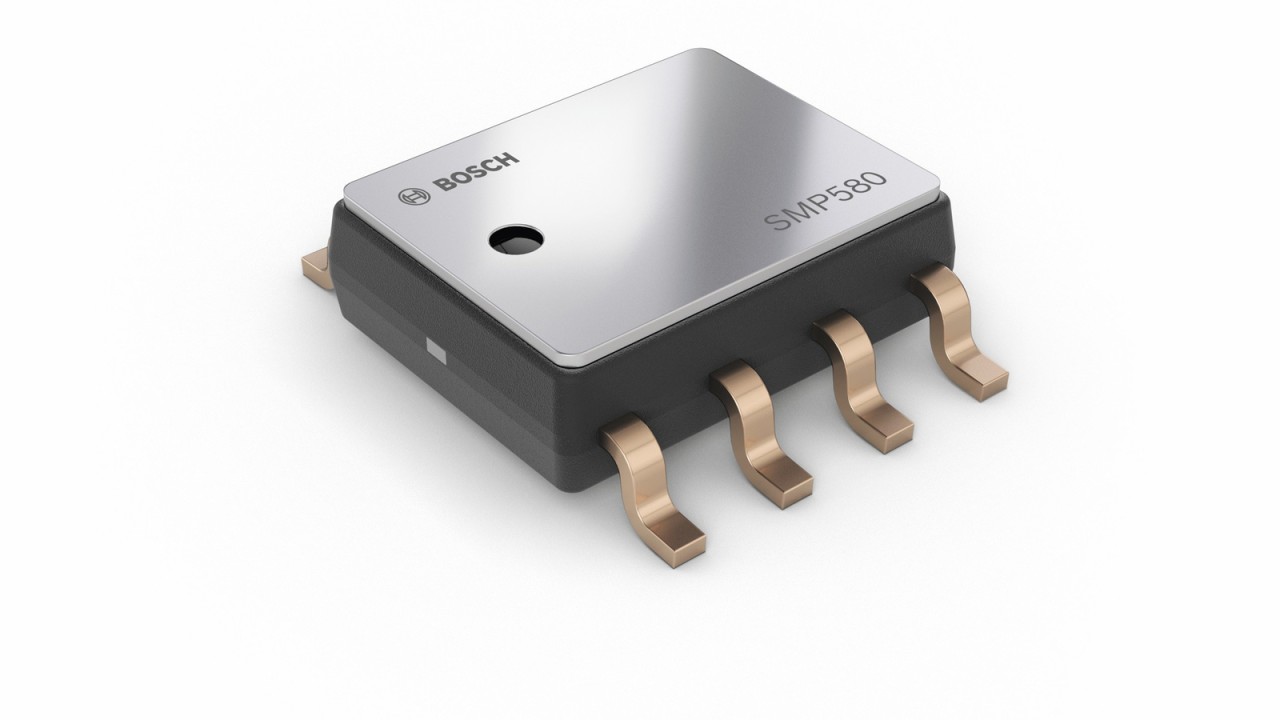At 2016 edition of the electronica trade fair which was held from November 8 to 11 in Munich, Bosch debuted the SMP580. The new device is a barometric pressure sensor for measuring the ambient pressure and temperature in automotive engine management applications. The barometric pressure sensors play a key role in engine management. The SMP580 can be used to measure the current ambient barometric pressure, which can vary continuously depending on the ambient temperature, altitude, and weather conditions. Thus, the new Bosch SMP580 barometric pressure sensor can be used to help engine management systems reduce fuel consumption and CO2 emissions as they can use the sensor data to seamlessly adjust the optimum air-fuel mixture. Having the optimal air-fuel mixture can also help motorists maximize engine performance and lower engine noise.
According to Bosch, the SMP580 is the smallest such sensor that is available in the market, and it is housed in a strong, ultra-compact SOIC8 cavity package that measures 4.9 x 3.9 x 1.5 mm³. Within the sensor, a wheatstone bridge works with piezo-resistors to convert the movement of a flexible membrane into a varying electrical current, which is processed and calibrated by an integrated ASIC.
From an accuracy perspective, the new sensor delivers very high measurement accuracy and long term stability, and it has a highly accurate twelve-bit digital SPI interface for pressure and temperature readings. Over its lifetime, pressure readings are accurate to a tolerance of less than 1.0 kPa, and temperature to less than three K. The power consumption is only marginal, with a supply current of less than five mA. It also has a power-down mode which consumes less than 15 μA. It can operate in temperatures ranging from -40 °C to +125 °C and can measure pressures from 40 kPa to 115 kPa for engine management, and 60 kPa to 165 kPa for seating systems.
Dynamic seat adjustment
In addition to optimizing engine management, the SMP580 sensor can be used in dynamic multi-contour seats by integrating them into the air chambers of the multi-contoured air cushioned seats, so that the seats can adapt to the anatomy of the driver and front-seat passenger. The seats can incorporate the sensors in order to provide users with position and form-adjustable lumbar support, adjustable side bolsters on the backrest and helping with overall stabilization of the seat while driving on winding roads. A massage function can also be activated. This can help minimize driver fatigue and increase convenience, especially on long trips.
MEMS technology
Bosch is one of the pioneers and a market leader in the manufacture of MEMS technology as it now manufactured over seven billion MEMS sensors in its state-of-the-art wafer fab in Reutlingen, Germany.






















